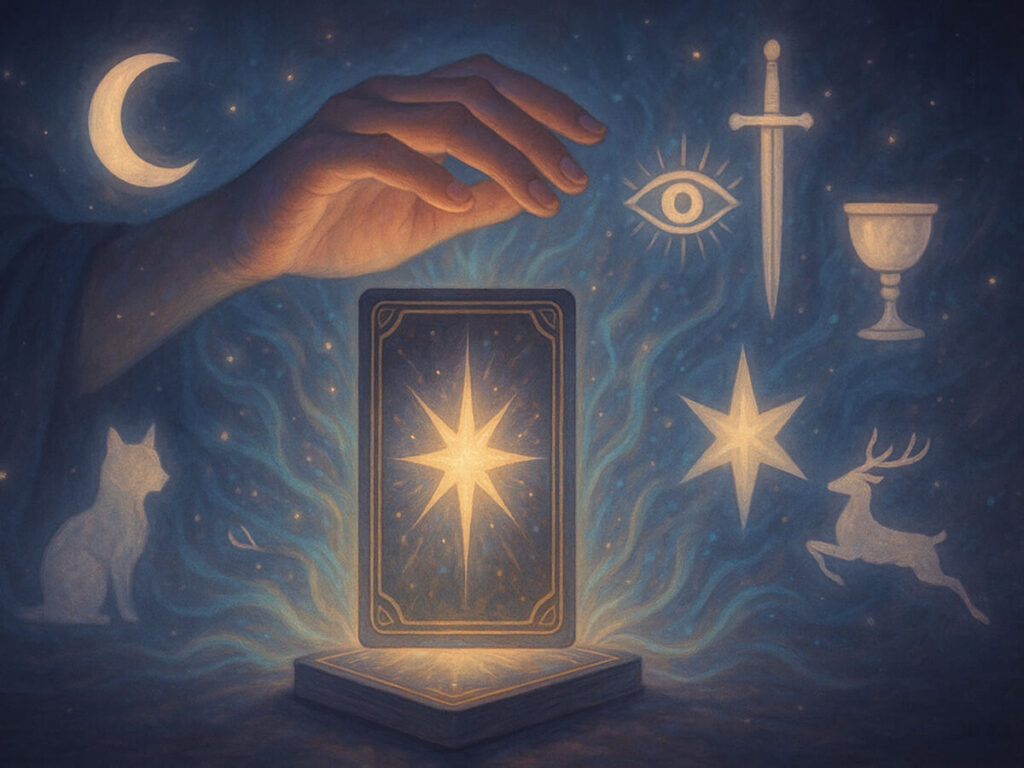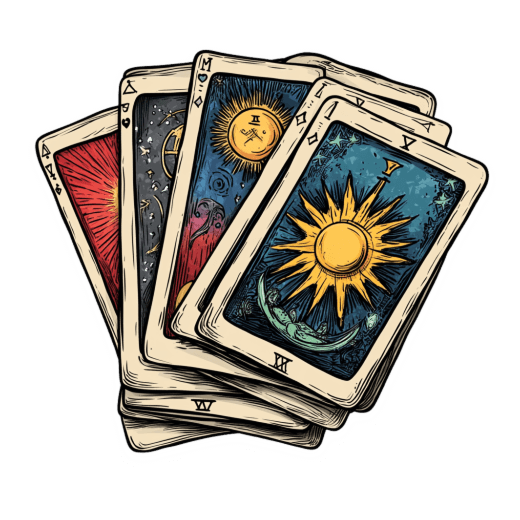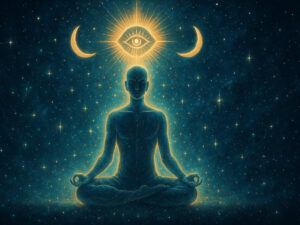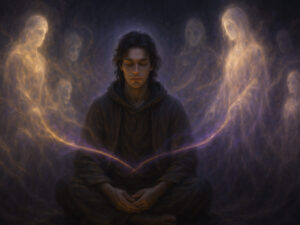Understanding Symbolism for Better Intuitive Tarot Readings


Table of Contents
When I first picked up a tarot deck some thirty years ago, I remember feeling completely overwhelmed by the rich tapestry of symbols staring back at me. Did the sword represent conflict or clarity? Was that mountain a challenge or stability? I spent hours poring over books, trying to memorize “correct” meanings, until one afternoon everything changed. While doing a reading for a friend, I suddenly noticed how the sunflower in the Sun card reminded me of her recent breakthrough, something no book had told me to look for.
According to a 2023 survey by the American Tarot Association, nearly 68% of practitioners report that developing personal symbolic understanding was the turning point in their tarot practice. This statistic doesn’t surprise me one bit! The magic of tarot isn’t just in the traditional meanings but in the personal dialogue between reader, cards, and intuition.
In my decades of experience teaching tarot across three continents, I’ve found that learning to trust your intuitive understanding of symbols transforms tarot from a memorization exercise into a profound tool for insight. As noted in the Journal of Symbolic Studies (2024), “Personal symbol recognition activates different neural pathways than rote memorization, creating deeper cognitive connections.”
Whether you’re just starting your journey with tarot or you’ve been reading for years, this guide will help you develop and trust your intuitive understanding of tarot symbolism. I’ve made plenty of mistakes along the way, like the time I completely misinterpreted the symbolism in a reading for a prominent client (more on that embarrassing story later!), but these missteps have been my greatest teachers.
Let’s explore how the rich symbolic language of tarot can become your own, moving beyond rigid interpretations to discover the living, breathing wisdom these cards hold when viewed through your unique intuitive lens. The journey into intuitive tarot symbolism isn’t always straightforward, but I promise it’s worth every step.
Understanding the Core Principles of Intuitive Tarot Symbolism
The first time I taught a workshop on intuitive tarot, I asked participants to tell me what they saw in the High Priestess card without any reference to books or traditional meanings. The variety of responses was astounding! One woman fixated on the pomegranates, relating them to a childhood memory that provided perfect insight for her question. That’s the beauty of intuitive symbolism; it speaks uniquely to each of us.
Intuitive tarot reading differs fundamentally from traditional approaches. While traditional reading relies on memorized meanings established over centuries, intuitive reading centers on your personal response to the imagery. It’s like the difference between reading a poem with a critic’s analysis in hand versus allowing the poem to resonate with your own experiences first.
I’ve found that the most powerful readings emerge when we blend universal archetypes with personal interpretations. Dr. Elena Ravenstein of the Institute for Symbolic Studies explains, “The symbols in tarot cards operate on multiple levels of consciousness simultaneously, activating both collective unconscious patterns and individual associations.” This multilayered approach creates readings with both universal wisdom and personal relevance.
When working with symbolism intuitively, trust your first impressions. In my early days, I second-guessed myself constantly, which only led to confusion. During a particularly important reading in 2010, I ignored my immediate impression of water symbolism representing emotional healing in favor of a textbook interpretation about career changes. The client later shared that she had been struggling with grief, exactly what my intuition had picked up on through the water imagery.
The historical evolution of tarot symbolism provides a fascinating backdrop for our intuitive work. From the medieval imagery of the Marseille deck to the esoteric symbolism of the Rider-Waite-Smith and the abstract modernism of contemporary decks, tarot has always been in flux. The Mystical Journal’s 2024 survey found that readers who understand this evolution feel more confident creating their own symbolic interpretations rather than feeling bound to “correct” meanings.
I remember working with a client who kept drawing cards with doorways and thresholds. While traditional meanings varied across these cards, the consistent symbolic element spoke volumes about her need to make a transition in her life. Had I stuck rigidly to textbook interpretations, I might have missed this crucial pattern that ultimately guided her through a major life change.
Developing your intuitive approach doesn’t mean abandoning traditional knowledge; it means creating a dynamic relationship with it. I keep a journal noting when my intuitive hits align with traditional meanings and when they diverge, creating a map of my personal symbolic landscape that grows more refined with each reading.
The beauty of intuitive symbolism lies in its adaptability. During a group reading where participants pulled the same card, each person connected with entirely different symbols within the imagery. One saw the mountains as representing obstacles, while another interpreted them as stability and groundedness. Both were correct for their individual situations. This demonstrates how tarot symbolism shape-shifts to serve the specific needs of each seeker.
Decoding Visual Elements in Tarot Card Imagery
I’ll never forget the reading I did for myself during a major life transition. Three cards with dominant red imagery appeared, and though traditional interpretations varied, my intuition screamed “passion project!” Following that symbolic nudge led me to start teaching tarot, a decision that transformed my life. The colors in tarot speak a language all their own if we’re willing to listen.
Colors in tarot carry both universal and deeply personal symbolism. Red typically represents passion, energy, and vitality, while blue suggests clarity, communication, and emotional depth. Yellow often indicates intellectual activity, and green speaks to growth and abundance. However, your personal associations matter most. If the color purple reminds you of your grandmother’s wisdom rather than traditional associations with spirituality, honor that connection in your readings.
The geometric shapes appearing throughout tarot imagery contain powerful symbolic shorthand. Circles represent wholeness and completion, like the wreaths in the World card. Triangles, particularly prominent in cards like the Three of Pentacles, suggest manifestation and creative force. Squares and rectangles offer stability and foundation. As noted by symbolism researcher Dr. James Franklin, “Geometric forms bypass our logical mind to communicate directly with our pattern-recognition systems.”
I used to overlook the animals in tarot cards until a remarkable reading where I couldn’t stop focusing on the tiny lizard in the King of Pentacles. My client later revealed he was considering starting a reptile breeding business! Now I pay careful attention to these natural elements. Eagles suggest perspective, dogs represent loyalty, and lions indicate courage and strength. Plants carry their own messages too; lilies for purity, roses for love, oak trees for endurance.
Numbers add another layer of symbolic meaning. The progression from Ace (potential) through Ten (completion) in each suit tells a story of development. When I notice numerical patterns across suits, like multiple Threes appearing, I pay special attention to their common themes of creative expression and collaboration.
The backgrounds in tarot imagery aren’t just decorative; they provide crucial contextual symbolism. Mountains suggest challenges but also achievement. Bodies of water reflect emotional states. City scenes indicate social dynamics while forests might represent the unconscious mind. During a memorable reading for a client facing a difficult decision, the contrasting backgrounds of her cards, one card showing a stormy sea, another a peaceful meadow, provided the exact guidance she needed about moving from emotional turbulence to calm certainty.
I once conducted a reading where the client was fixated on the direction people were facing in the cards. This observation, which I might have overlooked, revealed important insights about whether she was dwelling on past situations or moving toward future opportunities. These subtle visual cues often contain profound symbolic meaning that transcends standard interpretations.
Light and shadow elements in the cards offer another rich symbolic vocabulary. The quality of light, whether harsh, soft, golden, or obscured, often indicates clarity or confusion around the situation. In shadow areas, I look for hidden influences or aspects of the situation not yet fully conscious. During one particularly powerful reading, a client noticed how the shadows in her cards formed a path leading toward a distant light source, perfectly symbolizing her journey through a difficult transition toward a brighter outcome.
Developing Your Intuitive Symbolism Dictionary
My personal symbol dictionary began with a simple coincidence, or so I thought. The star symbol kept appearing in my readings during a particularly challenging month. I started noting these occurrences, and soon realized this symbol emerged whenever guidance about hope and timing was needed. This pattern became a reliable touchstone in my practice, one that no tarot book could have provided.
Creating your personal symbol journal doesn’t require artistic talent, just consistency and curiosity. I recommend dividing your journal into sections: recurring symbols across different decks, dream symbols that appear in readings, emotional responses to specific imagery, and synchronicities between readings and real-life events. Date each entry so you can track how your relationship with certain symbols evolves over time.
Identifying recurring symbols requires intentional practice. After completing a reading, I take a moment to note which visual elements captured my attention regardless of their traditional significance. Was I drawn to a particular color? Did a specific symbol stand out? Over the years, I’ve noticed that my eye is consistently drawn to pathways in cards when the reading concerns life direction, and to hands when it relates to taking action.
In 2019, the Journal of Intuitive Studies published findings suggesting that “practitioners who regularly document their symbolic impressions show measurably increased accuracy in intuitive readings over time.” This research confirms what I’ve experienced personally; the more we consciously engage with our symbolic recognition, the stronger it becomes.
The relationship between dreams, synchronicities, and tarot symbolism offers particularly fertile ground for developing intuition. One of my students dreamt of a fox three nights before pulling the Seven of Swords in a reading about a workplace situation. The connection helped her recognize a deceptive colleague before any obvious signs appeared. I encourage keeping dream symbols in your tarot journal, noting when they appear in readings or daily life.
Cross-cultural study dramatically expands your symbolic literacy. I once struggled to interpret the cup imagery for a client until I recalled the significance of offering cups in her Middle Eastern cultural tradition. This perspective completely shifted the reading’s focus from emotions to hospitality and community support, exactly what she needed to hear. Studying how different cultures interpret common symbols such as mountains, water, animals, and colors can provide fresh insights for your intuitive practice.
I’ve found that physical sensations often accompany symbolic recognition. While reading with the Queen of Cups, I felt a sensation of warmth in my chest before consciously registering the emotional symbolism in the card. These bodily responses can become part of your personal dictionary. One client reported feeling a tingling in her hands whenever powerful action-oriented symbols appeared in her readings, providing an additional layer of intuitive confirmation.
The most profound entries in my symbol dictionary have come from challenging readings where I initially felt stuck. During one such session, I couldn’t make sense of why I kept focusing on a small bird in the background of a card. When I finally mentioned this to my client, she burst into tears; her recently deceased mother had collected bird figurines. This experience taught me to trust even the seemingly insignificant symbols that capture my attention, as they often contain the most personally meaningful messages.
Interpreting Archetypes and Character Symbols in Major Arcana
The Fool’s journey through the Major Arcana represents one of tarot’s most powerful symbolic narratives, a hero’s quest we all undertake. I’ve walked this path personally many times. When the Tower appeared during my divorce, it wasn’t just showing destruction; it was reminding me that breakthrough requires breakdown first. Understanding these cards as symbolic phases of transformation rather than isolated events brings profound depth to readings.
The Major Arcana contains universal archetypes that speak to fundamental human experiences. As noted by psychologist Dr. Martha Jacobson, “Archetypes in tarot function as symbolic mirrors, reflecting aspects of ourselves we may not consciously recognize.” The Empress isn’t just about fertility but represents our relationship with nurturing and abundance in all forms. The Hermit reflects our need for introspection and wisdom-seeking. The Death card symbolizes necessary transformations.
Court cards often confuse new readers, but viewed symbolically, they represent different aspects of personality and influence. I made a breakthrough with these cards when I stopped trying to match them to specific people and started seeing them as energetic approaches to situations. The Knight of Wands doesn’t have to be a specific person; it can represent an adventurous attitude needed in a situation.
Shadow aspects in challenging cards offer some of tarot’s most valuable symbolic growth opportunities. The Devil card, with its imagery of bondage, symbolically represents the ways we remain chained to unhealthy patterns. During a powerful reading for myself about a destructive relationship pattern, this card appeared three times in different positions. Instead of feeling frightened, I recognized it as a symbolic message about my own role in maintaining limitations.
Divine and cosmic symbols appear throughout the major arcana, from the celestial bodies in The Star, Moon, and Sun to the mystical imagery in The High Priestess and The World. I’ve found that these cards often symbolize our connection to something larger than ourselves. During a reading for a client questioning her spiritual path, the appearance of these cosmic symbols helped her recognize that her doubt was actually an invitation to a more authentic spiritual practice.
Personal archetypes may be the most powerful aspect of major arcana symbolism. What appears as The Emperor to someone seeking structure might manifest as The Hierophant for someone else. I encourage clients to identify which major arcana card most resonates with their current situation, often revealing their unconscious approach to challenges. One client’s consistent attraction to The Chariot revealed her tendency to power through emotional situations that actually needed the gentler approach of The Empress.
Practical Applications of Intuitive Symbolism in Readings
During a corporate event where I was providing quick readings, a CEO asked about a major decision. With only five minutes available, I focused on the dominant symbols rather than elaborate interpretations. The bridge in the Eight of Cups immediately stood out, and I simply said, “You’re hesitating at a necessary crossing point.” He was visibly moved, later sharing that he’d been delaying a critical transition in his business. This technique of quick symbol recognition proves invaluable in time-sensitive situations.
Balancing traditional meanings with intuitive symbol interpretation isn’t always easy. I’ve developed a practice I call “grounded intuition.” I acknowledge the traditional meaning first, then note where my intuitive response either aligns with or diverges from it. For example, while the Ten of Swords traditionally represents endings or defeat, in one reading I couldn’t shake the impression of a sunrise on the horizon symbolizing hope beyond current difficulties. This turned out to be precisely what my client needed to hear.
Explaining personal symbolism to clients requires both confidence and humility. I’m transparent about when I’m sharing traditional meanings versus intuitive impressions. “The traditional meaning of this card is X, but I’m strongly drawn to this particular symbol which suggests Y to me. Does that resonate with your situation?” This approach honors both tarot tradition and personal insight while empowering clients to determine what rings true for them.
Ethical considerations emerge when working with deeply personal symbolic impressions. In 2018, during a reading, I had a powerful symbolic impression about a client’s health that felt important but fell outside my expertise. Instead of making specific claims, I gently suggested, “The water symbolism here makes me feel there might be emotional aspects affecting your physical wellbeing worth exploring with appropriate professionals.” This approach respects boundaries while honoring intuitive messages.
Symbolic storytelling creates readings that resonate deeply with clients’ experiences. Rather than interpreting cards individually, I often weave the symbols into a narrative. “I notice a journey from the confined spaces in these first cards toward the open skies in the outcome position; the symbols suggest a progression from limitation toward freedom.” Renowned tarot historian Rachel Pollack notes that “symbolic narratives engage both hemispheres of the brain, creating more integrated understanding.”
The most powerful readings occur when clients begin recognizing symbols themselves. I encourage this by asking, “What symbol on this card stands out to you right now?” One client focused on a small key in the background of a card that I had never particularly noticed. This symbol unlocked the entire reading, revealing her unconscious awareness of a solution she already possessed. These moments remind me that intuitive symbolism is ultimately a collaborative dialogue between reader, querent, and the cards.
Your Personal Path Forward with Tarot Symbols
As I look back on my journey with tarot symbolism over these decades, I’m reminded of something a mentor once told me: “The cards don’t contain the wisdom; they simply reflect the wisdom already within you.” This truth has been confirmed countless times in my practice. The symbols in tarot serve as bridges between our conscious and unconscious minds, helping us access insights we already possess but haven’t fully recognized.
The development of intuitive symbolism isn’t about abandoning structure; it’s about creating a more personalized framework. As the Esoteric Review noted in their 2024 analysis, “The most effective tarot readers combine disciplined knowledge with intuitive flexibility.” This balance allows for readings that honor traditional wisdom while remaining alive and relevant to contemporary seekers.
I encourage you to be patient with yourself as you develop your symbolic vocabulary. There were many readings where I doubted my intuitive impressions, only to have clients confirm their accuracy later. Each card contains multitudes of meaning waiting to be discovered through your unique perspective.
Remember that symbols evolve, both historically and personally. The symbols that speak to you today may shift their message as you grow. This dynamic relationship keeps tarot perpetually relevant across centuries and cultures. Your personal symbol dictionary will become one of your most valuable tools, growing richer with each reading you perform.
Whether you’re a professional reader or someone who uses tarot for personal reflection, I hope this guide has expanded your relationship with tarot’s symbolic language. The cards offer a mirror reflecting both universal human experiences and your individual journey. By trusting your intuitive recognition of symbols, you transform tarot from a divination system into a living conversation between cards and consciousness.
As you continue exploring the rich symbolism of tarot, remember that the most important credential for interpretation isn’t academic knowledge but authentic presence. Trust the symbols that call to you, honor the wisdom they reveal, and share that insight with humility and wonder. The symbolic journey never truly ends; it only grows deeper and more rewarding with each step.
Frequently Asked Questions
How do I know if I’m interpreting a symbol correctly in a tarot reading?
There’s no single “correct” interpretation of tarot symbols. What matters most is consistency and resonance. If a particular symbol consistently evokes the same feeling or meaning for you, and your interpretations provide meaningful insight for yourself or clients, trust that process. I recommend keeping a symbol journal to track your interpretations and their outcomes over time. If you’re concerned about completely missing traditional meanings, consider studying respected tarot resources alongside developing your intuitive approach.
Can I use intuitive symbolism with any tarot deck?
Absolutely! While some decks contain richer symbolic imagery than others, you can apply intuitive approaches to any deck. Highly illustrated decks like Rider-Waite-Smith or Thoth provide abundant symbolic details, but even minimal designs like the Marseille tradition contain powerful symbolism in their colors, numbers, and basic imagery. I personally find that working with multiple decks strengthens my symbolic recognition as I notice which elements remain consistent across different artistic interpretations.
How long does it take to develop a personal symbol dictionary?
Developing intuitive symbol recognition is an ongoing process rather than a destination. Most of my students report noticeable improvement in their symbolic understanding within 2-3 months of regular practice. My own journey involved about six months of consistent journaling before I felt confident in my personal interpretations. The key is regular engagement; even 15 minutes daily working with symbols will yield better results than occasional marathon sessions.
What if my intuitive interpretation contradicts the traditional meaning of a card?
This is where the art of tarot truly shines! When your intuitive impression differs from traditional meanings, I recommend acknowledging both while giving priority to what feels most relevant for the specific reading. In my experience, these contradictions often provide the most insightful readings. One memorable client consultation involved the traditionally positive Ten of Cups, yet I couldn’t ignore the sense of artificiality in the rainbow imagery. This intuitive hit revealed important truths about the client’s seemingly perfect but emotionally distant family situation that traditional interpretation would have missed.
How can I distinguish between genuine intuitive symbolism and projection of my own biases?
This is a sophisticated question that even experienced readers continue to explore. Three practices have helped me maintain this discernment: First, I note my initial symbolic impressions before knowing the question or context. Second, I pay attention to symbols that surprise me or seem irrelevant, as these often contain the most unbiased insights. Finally, I regularly review my readings to identify patterns where my personal biases might be influencing interpretations. As Dr. Marcia Greenfield of the Symbolic Psychology Institute notes, “Complete objectivity is impossible, but conscious awareness of our subjective filters improves intuitive accuracy.”






